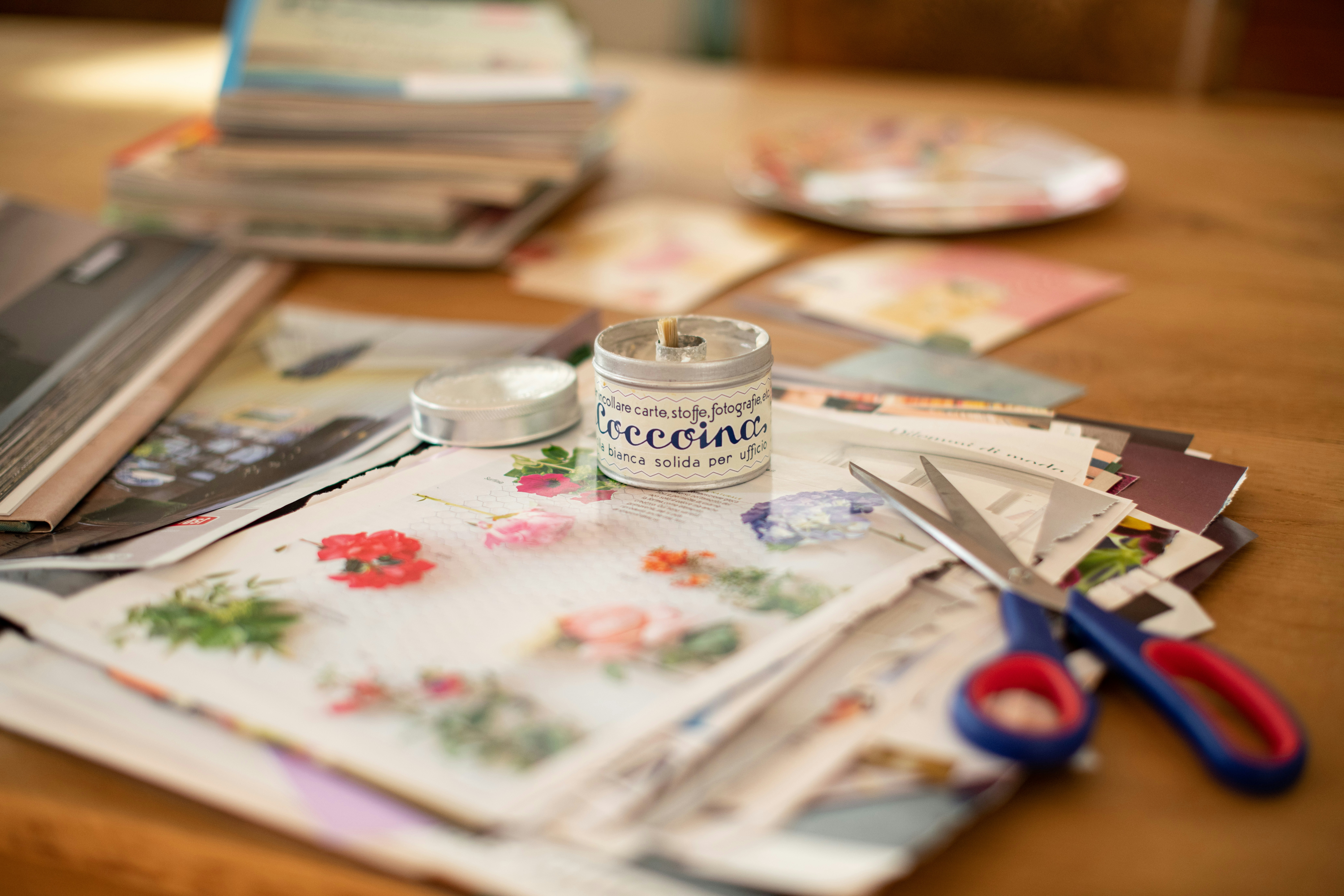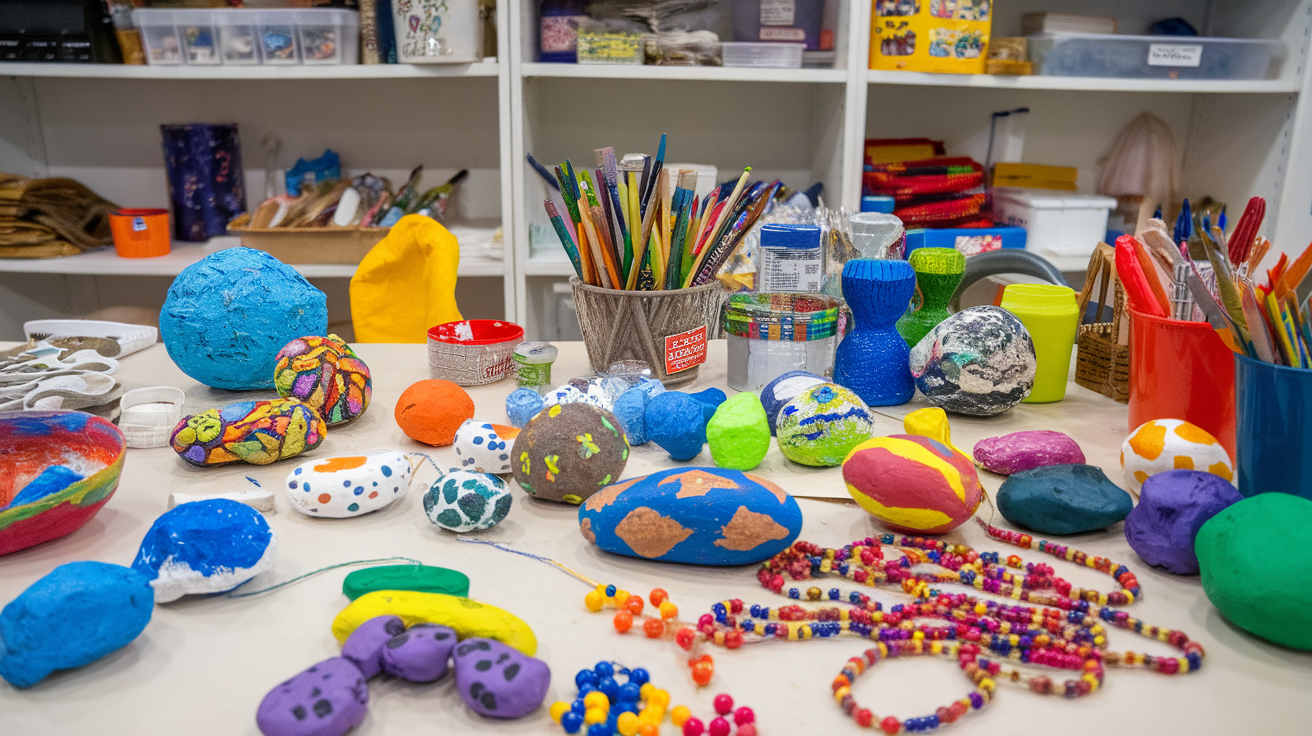What is Scrapbooking?
Scrapbooking is a creative way to preserve memories by combining elements such as photographs, written anecdotes, and decorative items in a visually engaging format. The craft has roots that can be traced back centuries, with early instances of preserving memories appearing in the form of keepsake books. As society advanced, so did the tools and materials available, and scrapbooking began to gain popularity in the 1980s when crafters started to explore innovative ways to document their personal histories. This evolution marks scrapbooking as both an art form and a sentimental pursuit.
The primary purpose of scrapbooking is to capture and cherish moments from an individual’s or a family’s life. By creating customized pages that reflect personal experiences, scrapbookers aim to celebrate milestones, important events, and everyday life. The act of selecting, arranging, and decorating photographs and memorabilia involves artistic expression and serves as a therapeutic activity for many individuals. This multifaceted nature is what truly defines scrapbooking.
Scrapbooking styles vary widely, offering something for every creative preference. Traditional scrapbooking often involves physical materials like patterned papers, stickers, and embellishments, leading to a tactile and hands-on experience. On the other hand, digital scrapbooking utilizes software and online platforms to design and arrange layouts, providing a modern twist to this cherished craft. Each style presents its advantages, allowing practitioners to choose based on their skills, preferences, and available resources.
Furthermore, scrapbooking can take on various themes, from family history and travel adventures to seasonal celebrations and everyday moments. By understanding what scrapbooking entails and the different forms it can take, beginners are better equipped to embark on their creative journey in this fulfilling pastime.
Essential Supplies for Scrapbooking
Embarking on a scrapbooking journey requires a thoughtful selection of essential supplies that cater to both creativity and functionality. For beginners, understanding the various tools and materials available is crucial for creating beautiful and lasting scrapbook pages.
First and foremost, paper is the foundation of any scrapbook. Acid-free and lignin-free paper varieties should be prioritized, as they help maintain color and prevent deterioration over time. Options such as cardstock, patterned paper, and specialty paper can add dimension and style to your scrapbook layouts. It is advisable to choose a color palette that reflects your personal aesthetic, as this will provide consistency across your designs.
Adhesives are another vital component in scrapbooking. There are various types available, including glue sticks, double-sided tape, and liquid glue. A tape runner is especially user-friendly for beginners, as it provides a quick and mess-free way to adhere photos and embellishments. When selecting adhesives, ensure they are acid-free to protect the integrity of your materials.
The next essential tool is a good pair of cutting tools. A craft knife and a pair of scissors are necessary for precise cutting and trimming of paper. Additionally, a self-healing cutting mat will protect surfaces while enhancing safety during the cutting process. A paper trimmer can also be a valuable addition, providing straight cuts for clean edges and professional-looking layouts.
Finally, embellishments, such as stickers, washi tape, and decorative brads, can elevate your scrapbook’s visual appeal. When choosing these elements, consider their durability and compatibility with the materials used. Quality supplies not only enhance the overall look of your work but also ensure the longevity of your projects.
To find these essential scrapbooking supplies, local craft stores often have a wide selection. However, online retailers also provide an extensive assortment, often featuring user reviews that can guide your choices. Investing in quality materials from reputable sources will significantly enhance your scrapbooking experience.
Basic Techniques and Tips for Beginners
Scrapbooking is a creative way to preserve memories and express one’s artistic flair. For beginners, understanding fundamental techniques is crucial to creating visually appealing scrapbook pages. One of the essential techniques is photo layering, where photos are arranged on a page in such a way that they overlap. This technique adds depth and interest to your project. Using different sizes and orientations of photos can create a dynamic layout that draws the viewer’s eye.
Another key element in scrapbooking is journaling. Writing down thoughts, feelings, or anecdotes related to the photos enhances the story being told. It can be as simple as a caption or as detailed as a narrative. Selecting the right font or handwriting style will also contribute to the overall aesthetic of your scrapbook. Aim for a balance between images and text to maintain reader engagement.
Embellishments, such as stickers, ribbons, and stamps, are also important in scrapbooking. These decorative elements add personality and charm to pages. Consider coordinating colors and themes when choosing embellishments to ensure a cohesive look throughout your scrapbook. For beginners, it is advisable to start with a limited color palette to avoid overwhelming the page.
When planning your layouts, think about balance and flow. Arrange items in a way that is pleasing to the eye, ensuring there is enough space to breathe between elements. Additionally, theme selection can guide the design process. Choose a theme that resonates with the collection of photos you have, whether it’s a specific event or a more generalized topic like travel or family. To find inspiration, numerous resources are available, from scrapbooking books to online tutorials and dedicated forums. Celebrating creativity, engaging with the scrapbooking community can enhance the learning experience and spark new ideas for your projects.
Getting Started: Your First Scrapbook Project
Embarking on your first scrapbook project can be an exhilarating yet daunting experience. The initial step is to choose a theme or an event that resonates with you, as it sets the tone for your creativity. Popular themes for beginners include holidays, family gatherings, travel adventures, or milestones like birthdays and graduations. Selecting a meaningful theme will not only guide your design choices but also deepen your emotional connection to the finished scrapbook.
Once you’ve established a theme, outline the key moments or experiences you wish to include. This planning phase is crucial, as it allows you to visualize the layout and content of your scrapbook pages. For beginners, it may be helpful to create a simple sketch or a list of photographs and mementos you want to showcase. This organized approach will alleviate any uncertainties as you begin the actual crafting process.
After planning, it is time to gather supplies. Basic materials for your first scrapbook include a scrapbook album, decorative papers, scissors, adhesive, pens for journaling, and embellishments such as stickers or washi tape. Don’t feel pressured to invest in elaborate supplies initially; many beginner-friendly kits are available, providing everything you need to get started. Such kits often include an assortment of materials that align well with common themes, simplifying the selection process.
As you begin creating your pages, remember to keep the design simple. Experiment with layering photos and papers, but ensure that your personal memories remain the focal point. Utilize journaling to infuse context and sentiment, allowing viewers to appreciate the story behind the images. With time, practice, and a little courage, your first scrapbook project will evolve into a beautiful, personal narrative. Embrace the creative process and enjoy the journey of capturing cherished memories.


